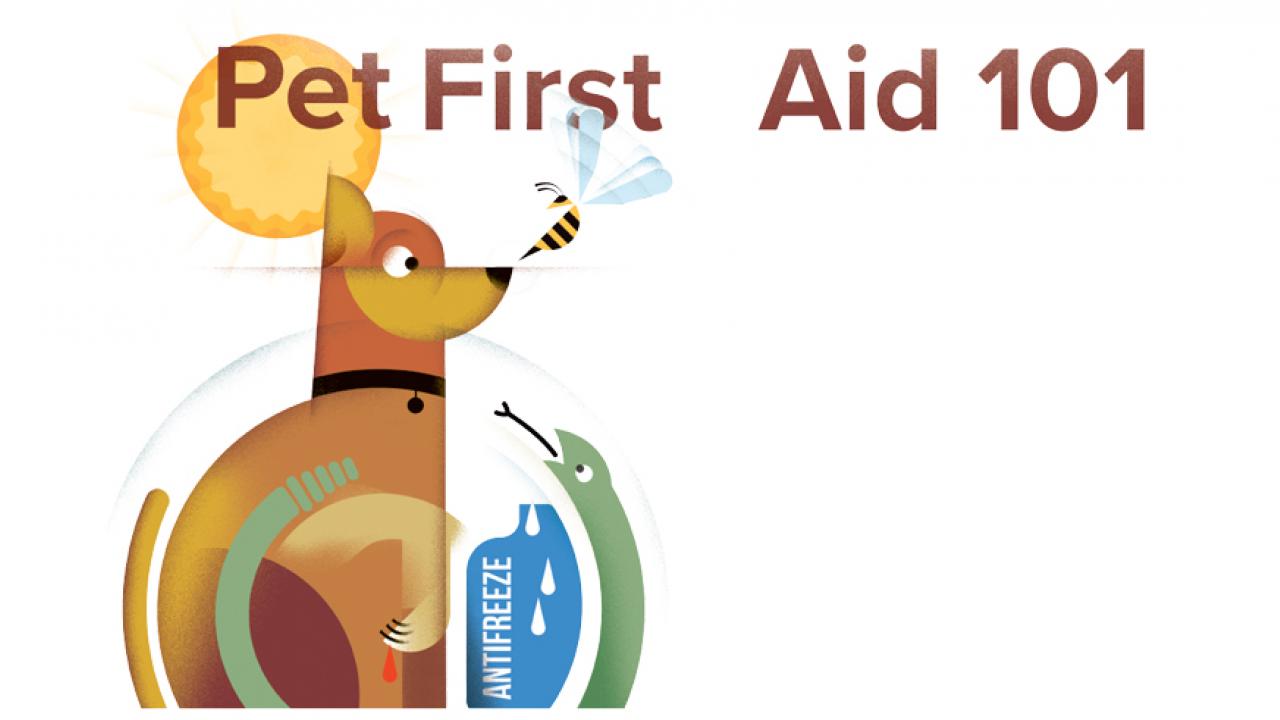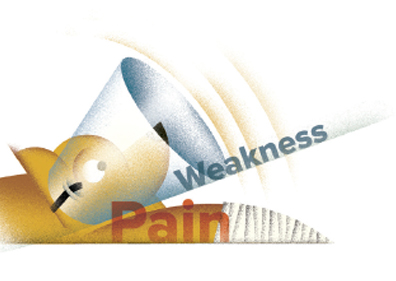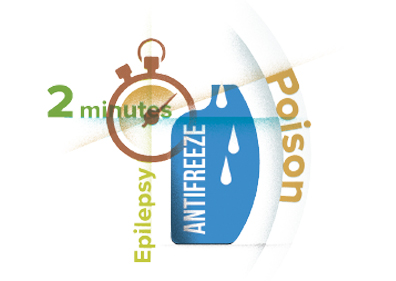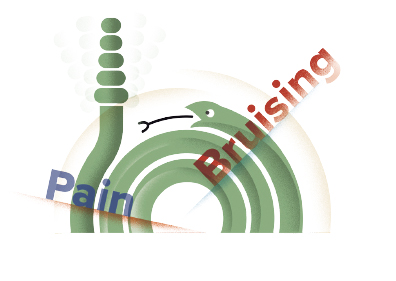
Pet First Aid 101 - Fall 2020
EMERGENCY PHONE NUMBERS FOR POISONING
Animal Poison Control 888-426-4435
Pet Poison Helpline 855-764-7661
How to Help Your Animal When Disaster Strikes
Emergencies may happen over the course of your pet’s life. Do you know the best practices for handling them? UC Davis critical care veterinarians have some tips for you on when to seek immediate medical assistance and what to do to make your pet more comfortable or possibly save a life.
First and foremost, stay calm. Take a few deep, slow breaths and focus on the task at hand – this will give you the best chance of saving your dog or cat.
Many emergencies happen outside the home, such as a car accident or hiking injury. As in the case of human first aid, your safety is paramount so that you can help an injured companion. Assess your surroundings. Are there cars, other animals, or other hindrances nearby that could make the situation more dangerous? Is the injured animal showing overly aggressive tendencies? If so, a muzzle may be necessary. If you don’t have one, a rope or leash can be used as a substitute. Even the sweetest dog can become aggressive in a chaotic situation or when they are in pain. Never take anything for granted in an emergency.
Once you feel the situation is stable, examine the animal. Is your pet listening to you and responsive to sounds? If so, your voice could help reassure them. Try not to panic – your calmness may help them feel less anxious.
Next, check your pet’s breathing. Is it heavy or labored? This may indicate a more severe issue. Check for any obvious injuries. Just because you don’t see wounds or major injuries doesn’t mean there aren’t any. Palpate your pet’s body to check for signs of pain. All of this will help you determine how quickly you need to seek veterinary care.
Remember, any first aid you administer is not a substitute for professional veterinary care. Even with minor injuries, it is always a good idea to follow up with your primary veterinarian.
 Traumatic Injuries: Wounds, Bleeding, Fractures
Traumatic Injuries: Wounds, Bleeding, Fractures
Many minor wounds can be managed at home, but if there is excessive bleeding (continuous after 10 minutes of constant pressure), seek veterinary care immediately.
If the bleeding stops shortly after applying pressure, reduce environmental contamination by cleaning the wound with water and removing dirt or other debris. This may require trimming the hair around the wound if your pet allows. Do not use human medicine such as an antibiotic or pain relief ointment. Cover the wound with a clean, dry dressing such as gauze, and lightly bandage and wrap the area. If the bleeding is severe, keep pressure on the wound throughout transport to the nearest veterinary hospital. Internal bleeding is also a major concern in many accidents. Signs include: pale gums, weakness or collapse, distended belly and difficulty breathing.
Fractures can be some of the most painful injuries for animals, so keep your safety in mind, as dogs with broken bones may bite. Try to keep them as stable as possible while transporting them to the hospital. Securing your pet to a hard, flat surface is best, but do not apply pressure to the chest while securing – this may cut off their ability to breath.
Do not bandage or wrap an open fracture in any way. Also, do not splint a limb before transport. This could cause more pain or make the break worse. Do not give dogs or cats any human pain medications as they all have the potential for significant side effects in animals.
 Seizures
Seizures
Seizures manifest as rapid, uncontrolled jerking movements. Remain calm. Often, a seizure is more stressful for the human than the animal experiencing it. Time the seizure. If it is less than two minutes, it may not be severe and you can follow-up with your primary veterinarian (if your pet appears fine afterward). If it lasts longer than two minutes, you should seek immediate veterinary care.
During a seizure, keep your pet away from harmful objects or areas where it could sustain injury. Also, keep other pets away, as they may attack the animal in seizure. Do not restrain or hold your pet down; this could worsen the situation. Do not place your hand near its mouth, as animals tend to bite down while seizing.
Seizures may be symptoms of poisoning, epilepsy, meningitis or a brain tumor. It’s important to speak with your veterinarian to determine the cause and develop any needed treatment plan.
 Heat stroke
Heat stroke
Heat stroke can occur when a pet is trapped in a hot environment or through over-exertion. It can occur on both extremely hot and mild days if animals are not adjusted to the weather or caught somewhere without fresh air, like inside a car. Because dogs and cats cannot sweat, they rely on panting to cool down. Obese, brachycephalic, and thicker coated dogs may be more prone to heat stroke.
Heat stroke can damage all body tissues; the brain, kidneys and gastrointestinal tract are particularly vulnerable. Severe heat stroke can be fatal, even with advanced veterinary care. Prevention is the best option.
Never leave your pet in a car, even on a mildly warm day. In balmy 70-degree (F) temperatures, a car’s interior can increase to 89 degrees in 10 minutes, and reach 104 degrees in 30 minutes.
SIGNS OF HEAT STROKE:
- Excessive panting or respiratory distress
- Drooling
- Distress/restlessness
- Weakness, unsteady walking or collapse
- Pale gums
WHAT TO DO IF YOU FIND AN ANIMAL EXPERIENCING HEAT STROKE:
- If the animal is weak, unsteady, collapsed, disoriented, or having trouble breathing, seek veterinary care immediately.
- If the animal is panting heavily but still able to walk normally, move it to a cooler area and wet it down with water. Avoid making them too cold – normal body temperature for dogs and cats is 101 to 102.5 degrees (F).
- If an animal is panting heavily, a fan will help cool it more quickly.
- Give the animal access to water.
- If heat stroke symptoms do not subside within 30 minutes, seek veterinary care.
 Insect Bites or Stings
Insect Bites or Stings
There is a long-standing myth that spider bites are a common occurrence in animals. In fact, UC Davis faculty teach veterinary students that if an animal appears to have a bite, it is rarely from a spider.
Many animals however, do get stung by bees and wasps. These stings will cause swelling (often symmetrical, as the sting manifests as a systemic allergic reaction), pain, and itchiness resulting in pawing at the site.If possible, remove the stinger. Common places for pets to get stung are on the tongue, in the mouth, or on the lips because they often try to catch the insect with their mouth. Stings are often painful, so be cautious when handling your pet as they may bite when distressed or in pain.
If the reaction to the sting is mild, you can monitor your pet at home. The swelling will probably go down in 6-12 hours.
If the reaction is severe, causing your pet to vomit, have difficulty breathing, and/or appear distressed or lethargic, seek urgent veterinary care.
 Snake Bites
Snake Bites
Rattlesnake bites are the most common snakebites seen by emergency care veterinarians. The venom causes serious problems, so it is imperative to seek immediate medical assistance. There is no way to predict or determine how severe an individual bite will be. Many factors come into play, such as: the size of your pet, how many times the pet is bitten, and if the snake has recently eaten (as it may have less venom available). Signs of a snakebite may include: puncture marks, swelling, bruising or redness around the bite site, pain, bleeding, vomiting and weakness.
WHAT TO DO IF YOUR PET HAS BEEN BITTEN BY A SNAKE:
- Stay safe – separate all animals and people from the snake to avoid further bites.
- Reduce movement – carry the bitten animal if possible. Walking or running on a bitten leg will increase the spread of venom throughout the body.
- Seek veterinary care ASAP – severe snakebites can be life threatening and the earlier treatment is provided, the less damage the bite will cause.
WHAT NOT TO DO:
- Do not try to catch or kill the snake. Bringing a dead snake to the veterinarian will not help with a bite analysis.
- Do not cut around or suction over the fang marks. It is a myth that you can bleed or suck the venom out of the bite area. It will only worsen the wound.
- Do not place a tourniquet or wrap the bitten area if the bite is on a leg, as this can lead to more severe tissue injury and even loss of the leg.
- Do not place an ice pack on the bite. It will not provide benefit and may cause more pain.
